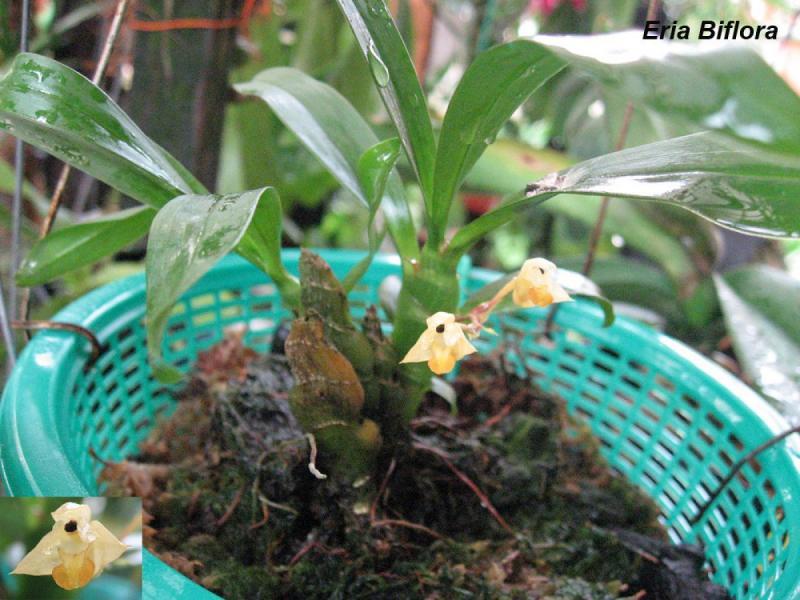Eria biflora
Also known as: The Two Flowered Eria in the subfamily: Epidendroideae
Native to: Kelantan - Malaysia Myanmar Pahang - Malaysia Sabah - Malaysia Thailand
General Information
The Two Flowered Eria is a warm to hot growing orchid belonging to the sub family Epidendroideae native to Malaysia, Myanmar and Thailand.
Plant Description
Grows to 1-23cm. Each new growth has numerous lance shaped leaves that grow to 0.5-9cm long. Pseudobulbs grow to 1-20cm
Substrate(s)
- Coarse
- Bark
- Charcoal
- Spaghnum Moss
- Perlite
Climate
These orchids thrive in cool, conditions with good airflow. When cultivated they will thrive in a cool, sheltered environment such as a shaded greenhouse, or if grown in cooler climates they can be grown in the garden in areas where they are protected from frost and receive shade throughout the year, though they may be able to tolerate some morning sun during winter.
Grows at low to high elevations. Rainfall ranges from 5mm to 546mm per day, heaviest in June and lightest in December. Humidity ranges from 51% to 84%, highest in September and lowest in March. Temperature ranges from 8C to 28C, highest in April (23C to 28C) and lowest in January (8C to 20C).Watering
These orchids are sensitive to excessive watering and should only be watered when they look thirsty. Water infrequently and ensure that the roots are dry before watering. Keep an eye on them especially during hot weather as overwatering can lead to rot, whereas underwatering may result in wilting or shriveling, which while unattractive, will not kill the plant.
Fertiliser
Apply liquid based fertiliser per recommended directions. They can benefit from a high phosphate fertiliser leading up to flowering season, followed by a high nitrogen fertiliser when new growth appears, and a balanced fertiliser in other times. These orchids can also tolerate slow release fertiliser applied 1-2 pellets per cup (250ml) of media.
Use balanced fertiliser during Spring and Summer. Apply fertiliser regularly at half strength year round. Use a high Nitrogen fertiliser during Spring and Summer. Use a high Phosphorous fertiliser during Summer.Potting
This plant does very well in baskets or suspended pots This plant does well mounted to Cork slabs. Repotting is best done annually.


